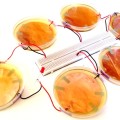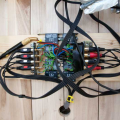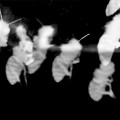The sound beehive experiment. A laboratory to study the development of the colony through its own sounds.
We will execute daily observations at the flight hole as well as record and archive sound recordings at regular time intervals. There will be a camera in topshot above the entry of the hive, filming at 30fps. A second camera will film the action inside of the beehive. All sensors, microphones and camera’s are synchronized and timestamped. A playlist will be available for online visitors. The data flow will be analysed by specialists in bio-acoustics, using machine learning and complex systems techniques. Video and annotations will be available in the okno.pandora.be video database. The information archive will grow as recordings and observations will be added over time.


As bio indicators, honeybees provide us with a constant stream of information on the environment (urban, countryside) on which they forage (activity, pollen, nectar). Diseases like colony collapse disorder and environmental problems like the use of pesticides could be analysed in a different way by monitoring and analysing the daily … (read more…)

Our initial intention is to install the Asus computer (with debian) and a Mackie mixing panel. Later we decide to swap that setup for a more performative one: an 8 channel Prosonus soundcard, the Asus with Debian for recording and sending the files over the network to a NAS (network attached storage) hard disk.
We will record 4 times 3 minutes an hour, every :00, :15, :30 and :45. The 8-channel … (read more…)

This time I want to do it differently. I will record at regular intervals the hum of the colony and analyse it thoroughly afterwards. I also want to link the sounds with the environmental sensor data (temp, humidity, solar radiation) in the surroundings of the apiary, with the sensor data inside the beehive (temperature, humidity and vibration of the comb) as well with video images in- and outside the … (read more…)

Many naturalists have studied aspects of animal behaviour throughout history. The modern discipline of ethology is generally considered to have begun during the 1930s with the work of Dutch biologist Nikolaas Tinbergen and by Austrian biologists Konrad Lorenz and Karl von Frisch, joint winners of the 1973 Nobel Prize in Physiology or Medicine. Ethology is a combination of laboratory and field science, with a strong relation to … (read more…)
